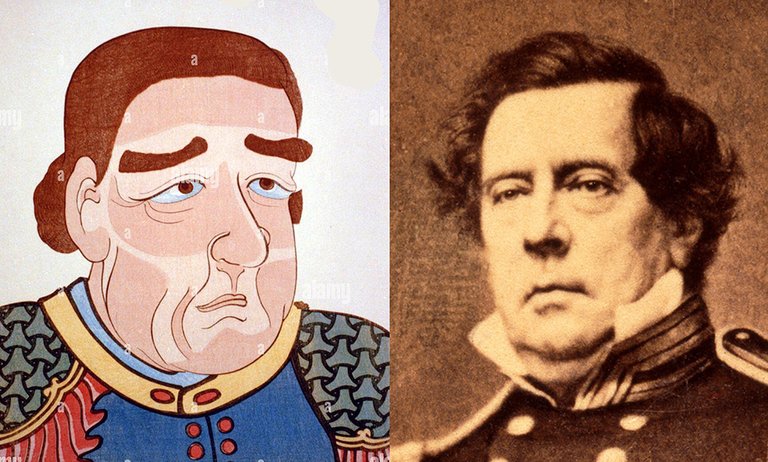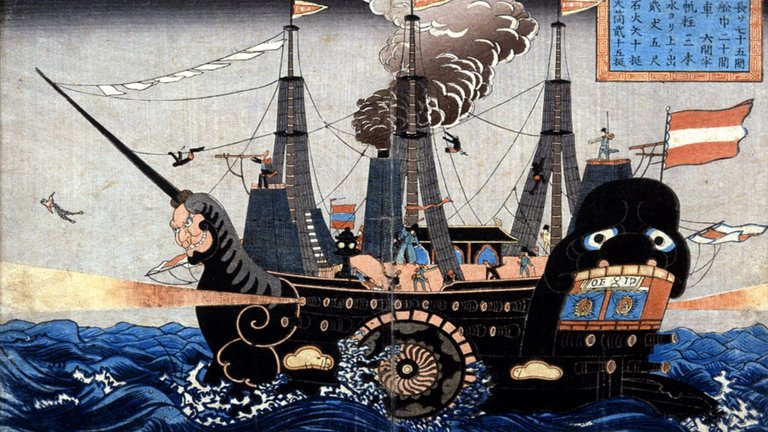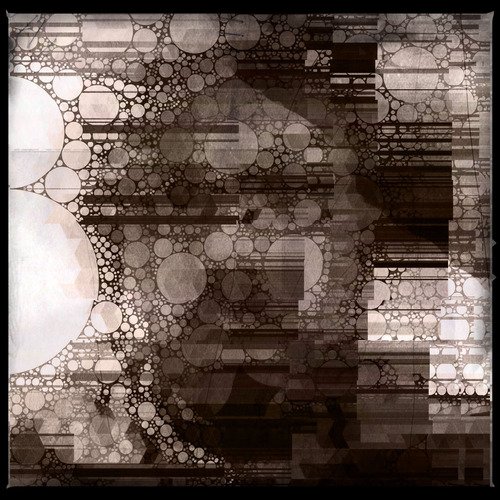Perry's Black Ships and The Opening of Japan

[Note: I originally wrote this on April 10th for this important anniversary. I scheduled it, but Peakd didn't publish it. A fairly common hiccup unfortunately. But then instead of manually publishing it, I got confused, thought I hadn't written anything, and published something different. So now, a month later, I am going back to publish it. Hey — only a month late!]
April 10 marks the birthday of Commodore Matthew Perry, the American naval officer whose 1853 arrival in Japan helped end over two centuries of national seclusion.
You may have seen Shogun recently, a very stylized version of the tail end of the civil war period of Japanese history. I still haven't watched the latest version of that story, but @bozz tells me it was really good.
At any rate, not long after the history shown in that story, Japan decided to close the country to all outside trade. There were many reasons for this, chief among them being a distrust of Europe and a fear of colonization. Japan would remain closed for over 200 years, until U.S. President Fillmore decided to do something about this and sent in Perry.

When Perry sailed into Tokyo Bay with four steam-powered warships, the sight was unlike anything the Japanese had ever seen. The ships spewed smoke and moved without wind, powered by coal and iron instead of sails. To the samurai government of the Tokugawa shogunate, these “Black Ships” (kurofune) symbolized not just military power, but the inevitability of change.
Within a year, Japan signed the Treaty of Kanagawa, opening ports to American trade. It was the beginning of the end for the shogunate, and the start of Japan’s rapid modernization. A few decades later, Japan would go from feudal isolation to building its own navy of black ships — this time headed toward Korea and China.

The above woodblock is an interesting one. The exaggerated demonic features — like the eyes on the stern and the monstrous prow — reflect the anxiety and awe many Japanese felt upon seeing Western steamships for the first time. The print is part of a larger genre of “Black Ship” imagery that surged in the 1850s and helped sear the event into the Japanese collective imagination.
Interestingly, the term kurofune didn’t disappear with modernization. It’s still used in modern Japanese as shorthand for outside forces demanding unwanted change — sometimes playfully, sometimes with deep unease. From the arrival of American baseball to the spread of Western fast food, kurofune lingers as a cultural metaphor.
You’ll even see it in advertising or hear it in politics. When UberEats launched in Japan, some commentators jokingly called it a new black ship. When foreign companies buy up Japanese firms, the term shows up again. Perry’s ships may be long gone, but the psychological impact of that first contact still ripples through Japanese society.
And so, on this day, it’s worth remembering not just a man, but the powerful image he left behind — a reminder that some doors, once opened, can never be shut.
❦
 |
David is an American teacher and translator lost in Japan, trying to capture the beauty of this country one photo at a time and searching for the perfect haiku. He blogs here and at laspina.org. Write him on Mastodon. |
You received an upvote of 86% from Precious the Silver Mermaid!
Please remember to contribute great content to the #SilverGoldStackers tag to create another Precious Gem.
I don't feel like the depicted the black ships the same way in the show. They referenced them, but you never actually saw one I don't think. I'm still baffled they are going to do a season 2 since the first one ended where the book did I think.
Yeah, that's what I heard. There is still a lot of interesting stories in the early Edo period, which is what we call the era after Ieyasu became Shogun. The real Blackthorn (Adams) made quite the impression on Ieyasu, became the offical Shogunate translator, was allowed in and out of Edo castle at will, and was even made a samurai and given land and servants. Adams was quite enthralled by Japanese life, and adopted Japanese customs and would, for example, sit on the floor Japanese style when meeting Western officials to translate for them. Lots of drama could be crafted from those years, I'm sure. But without the book, I wonder if the show will be able to frame the next events in the same way as the book had. Will be interesting to see!
Interesting!
An interesting read. One would say that American way of exporting "democracy" didn't change in last centuries :(
@tipu curate
Posted using The BBH Project
Upvoted 👌 (Mana: 55/75) Liquid rewards.
Better late than never! 😉😎👊